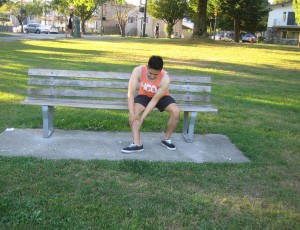Dry skin is part of a group of disorders called ichthyosis. Some environmental factors that cannot be controlled causes dry skin and these factors include hot or cold weather, low humidity and soaking in hot water. Dry skin can lead to the formation of fine lines and wrinkles.
[youtube url=”https://www.youtube.com/watch?v=VzAwt_fDeLk” width=”220″]Symptoms of dry skin can be lifelong conditions but the arms and the lower legs are the parts of the body mostly affected by dry skin and it varies from person to person. By enrolling in a first aid course, you will learn measures to prevent the dryness from getting worse. The symptoms include the following:

- Skin that appears and feels rough
- There is a feeling of tightness of the skin after taking a bath or swimming.
- There is itching or pruritus
- Fine lines or cracks on the skin
- There is slight flaking, scaling or peeling
- A gray color or ashy skin in people with dark skin
- Redness
- A deep crack that can bleed
Some environmental causes and diseases that can affect the skin include the following:
- Central heating, burning wood in stoves, space heaters and fireplaces causes reduction in the humidity level, thus causing the drying out of the skin.
- The skin is mostly dry in winter season when the temperature and the humidity levels drops but in hot regions such as the desert, the temperatures can rise while the humidity levels remain low.
- Taking a bath in hot showers for too long can cause dryness of the skin.
- Using harsh soaps and detergents can strip away moisture from the skin.
- Too much exposure to the sun can dry out the skin while the ultraviolet radiation penetrates the top layer of the skin that causes deep wrinkles and loose, sagging skin.
- Certain skin conditions such as atopic dermatitis known as eczema or psoriasis.
Dry skin left untreated can cause certain conditions such as atopic dermatitis or eczema which involves excessive redness, inflammation and cracking of the skin. The cracked skin will allow bacteria to enter and will cause infections.
Treatment and home remedies
- Apply moisturizer on the skin to provide a seal to keep water from escaping.
- If the skin is severely dry, apply baby oil while skin is still moist. Petroleum jelly can also be applied.
- Take a bath or shower using warm water for 5-10 minutes.
- Use mild soaps that contain oil and fat based ingredients. Avoid using deodorant and antibacterial detergents as well as those that contain fragrances and alcohol.
- After taking a bath, apply moisturizers on the skin that contain oil cream to help in trap water in the surface cells.
- Install a portable home humidifier to add moisture to the air inside the house. Just make sure that the humidifier is free from bacteria and fungi.
- Wear clothing that are made of cotton and silk that allows skin to breathe.
- If there is itchiness of the skin, apply a cold compress to the affected area. If there is an inflammation, apply hydrocortisone cream or ointment.
